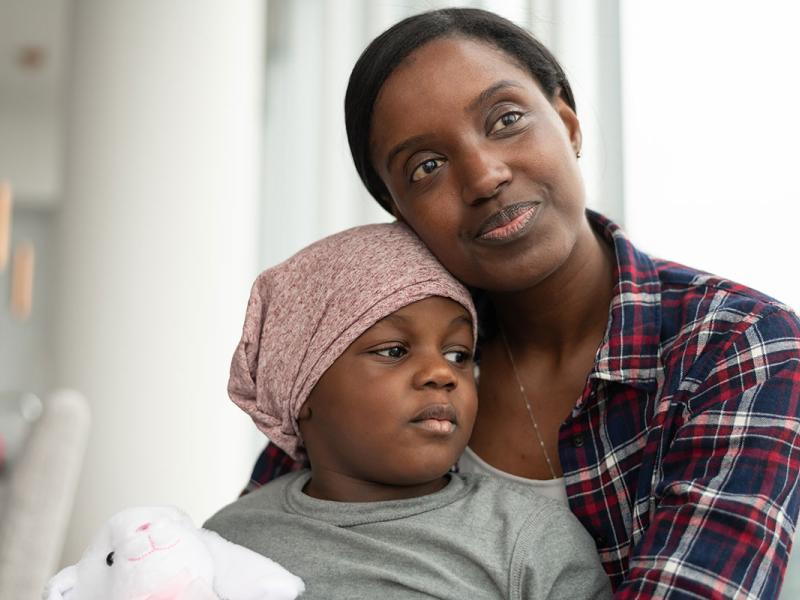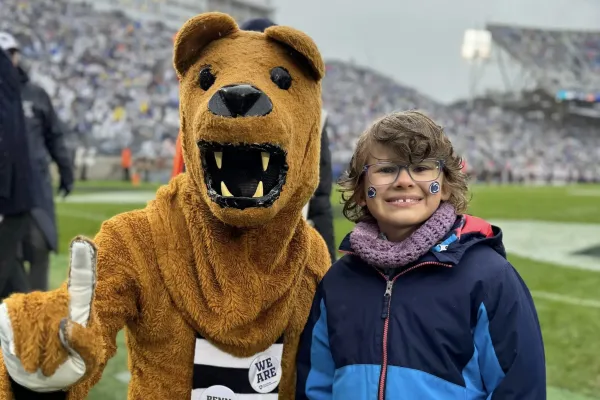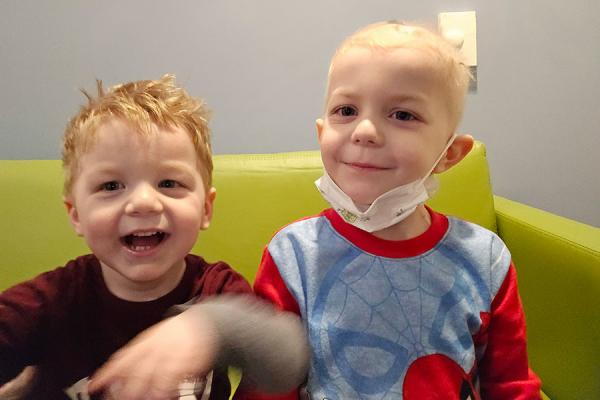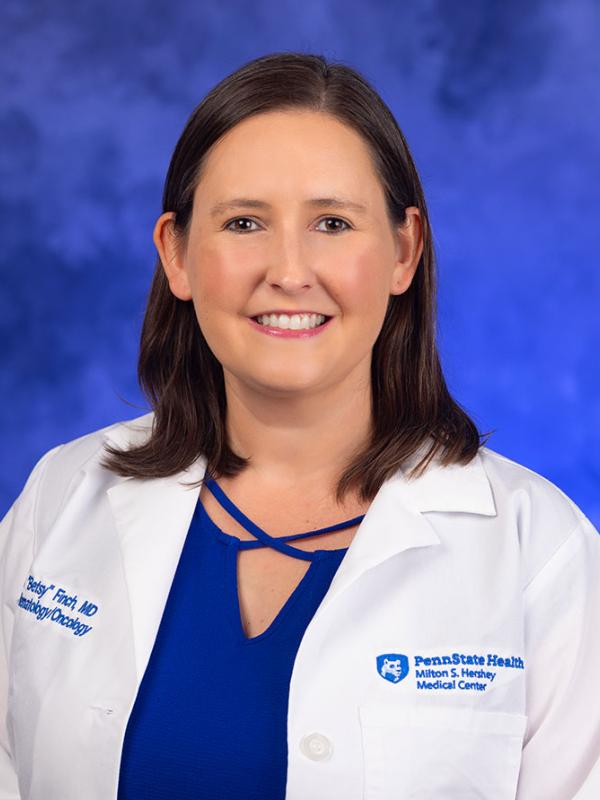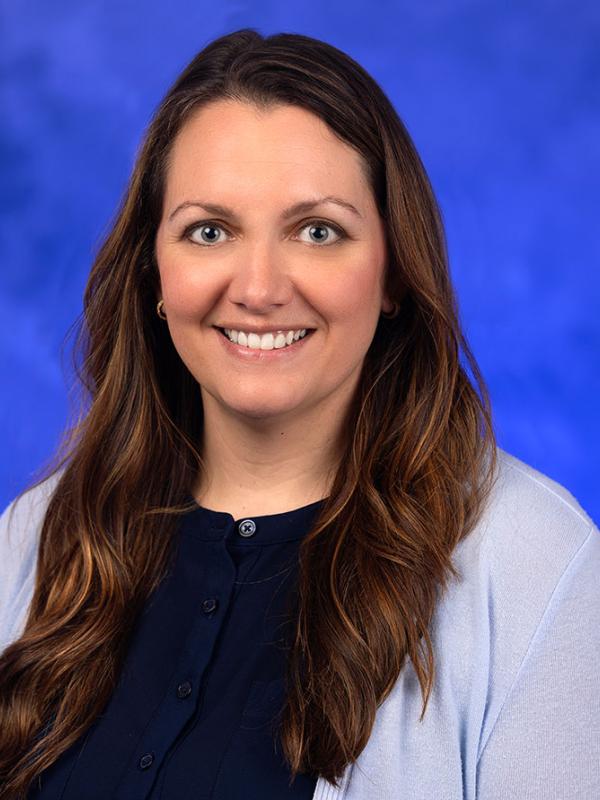Expert care for pediatric brain and spinal tumors
At Penn State Health Children’s Hospital, our dedicated team specializes in treating all types of brain and spinal cord tumors, both benign (non-cancerous) and malignant (cancerous). While either can be life-threatening, our goal is to provide expert, compassionate care that supports both survival and quality of life.
Our Pediatric Brain and Spinal Tumor Program brings together specialists in neuro-oncology, neurosurgery, physical medicine and rehabilitation, and neuropsychology. This multidisciplinary approach ensures that every child receives a personalized treatment plan, from diagnosis through recovery.
We also offer access to leading-edge therapies through our experimental therapeutics program, giving hope to children with recurrent or hard-to-treat tumors. By collaborating across pediatric subspecialties, we tailor care to achieve the best possible outcome for your child.
Types of tumors we treat
Our team cares for children with a wide range of brain and spinal cord tumors, including:
- Astrocytomas and oligodendrogliomas
- Atypical terato-rhabdoid tumors (ATRT)
- Choroid plexus tumors, benign and malignant
- Dysembryoplastic neuroepithelial tumors (DNET) and gangliogliomas
- Diffuse midline gliomas, including DIPG
- Ependymomas
- Germinomas and other germ cell tumors
- Medulloblastomas
When your child comes to the Children’s Hospital for brain and spinal tumor treatment, you can trust that our expert team will explore every treatment option. Our priority is not only to treat the tumor but also to preserve your child’s neurological function and quality of life. In addition to advanced surgical and medical treatments, we provide supportive care to help manage cognitive, neurological and emotional side effects. From rehabilitation and symptom management to emotional support, we’re here for your child and family every step of the way.
Why choose Penn State Health for care
Expert pediatric subspecialists
Treating complex brain and spine tumors takes a team. We’re the only hospital in central Pennsylvania offering a full range of pediatric subspecialists, including:
- Neurosurgeons
- Neurologists
- Neuropathologists
- Oncologists
- Psychologists
- Physical therapists
- Radiation oncologists
- Rehabilitation experts
Surgical expertise
For many children, surgery is the first step in treatment. Our team includes three dedicated pediatric neurosurgeons with extensive experience in diagnosing and removing brain and spinal tumors.
Visit Pediatric Neurosurgery for more information.
Clinical trials and research
Penn State Health Children’s Hospital is a member of the Children’s Oncology Group (COG), a National Cancer Institute supported clinical trials group. As part of this group, we follow treatment plans developed by cancer experts from across North America. Children treated at COG-affiliated institutions tend to have better results than children who receive care at other hospitals.
We also are a member and lead site for the Beat Childhood Cancer Research Consortium, a group of more than 50 hospitals that offer a worldwide network of childhood cancer clinical trials and collaboration. These trials are based on research from a group of closely collaborating investigators who are linked with laboratory programs developing novel therapies for high-risk pediatric cancers.
Available studies can be found here.
FDA-approved drug offers improved patient outcomes
Since the U.S. Food and Drug Administration approved the first drug to effectively decrease the resurgence of neuroblastoma in 2023, patients and families from around the world have turned to Dr. Giselle Saulnier Sholler and Penn State Health Children’s Hospital to help them beat this aggressive cancer, diagnosed most often in children younger than 6. This breakthrough drug called eflornithine (DFMO) emerged from Sholler’s research and clinical trials she led through the Beat Childhood Cancer Research Consortium. Sholler and her team are now studying if this drug can help patients with medulloblastoma, a fast-growing brain tumor.
Learn about this and the many other areas of critical pediatric research underway at Penn State College of Medicine.
Q&A: Turning THON fundraising into lifesaving medical treatments
Patient Stories
Meet our team

Amy Tubbs, RN, BSN, CPON
Pediatric Neuro-Oncology Nurse Coordinator

Heather Soistmann, PhD, RN
Pediatric Neurofibromatosis Clinical Care Coordinator
Symptoms, diagnosis and outlook
Pediatric Brain Tumors
A brain tumor is a mass of abnormal cells that start in the brain. Symptoms can develop slowly or quickly. Headaches are common but rarely mean a brain tumor.
Headache patterns to watch for:
- Worse in the morning, easing after a few hours
- Worse with coughing, exercise or changing position
- Occurring during sleep, with vomiting or confusion
Other symptoms:
- Changes in personality or behavior
- More sleep than usual
- Memory or reasoning problems
- Gradual loss of movement or feeling in arms or legs
- Hearing loss with or without dizziness
- Balance problems
- Speech difficulties
- Vision problems, including double vision or loss of peripheral vision
- Weakness or numbness
Signs in infants:
- Bulging soft spot on the head
- Enlarged eyes
Diagnosis may include:
- CT scan of the head
- MRI of the brain
- Spinal fluid test
Outlook depends on the tumor location and how early it is found.
Pediatric Spinal Cord Tumors
A spinal cord tumor is an abnormal growth in or around the spinal cord. Symptoms vary by type, location and your child’s health. Tumors that spread to the spine from elsewhere (metastatic tumors) usually grow quickly. Tumors that start in the spine (primary tumors) often grow slowly, over weeks or years.
Pediatric spinal tumors often cause symptoms that can affect large parts of the body. Tumors outside the spinal cord may grow slowly before causing nerve damage.
Symptoms may include:
- Abnormal or lost sensation, especially in the legs
- Back pain that gets worse over time, when lying down or with strain (coughing, sneezing)
- Loss of bladder or bowel control
- Muscle twitches or spasms
- Weakness in the legs, causing falls or trouble walking
Diagnosis may include:
- Spinal fluid test
- Cell analysis of spinal fluid
- Spine CT
- Spine MRI
Outlook depends on tumor location and early diagnosis.
Hope for patients and families
FAQs
What are the most common pediatric brain tumors?
The most common non-cancerous brain tumor in children is pilocytic astrocytoma, and the most common cancerous brain tumor is medulloblastoma.
What is a slow growing pediatric brain tumor?
Low grade gliomas, such as pilocytic astrocytoma and ganglioglioma, are slow-growing brain tumors.
What happens when a child has a brain tumor?
Usually, a child will have an MRI or CT scan to find the tumor. Then, surgery is done to remove the tumor or take a small sample to identify the type and decide if radiation or chemotherapy is needed.
What is the most useful treatment for brain tumors in children?
Brain tumors can be treated with surgery, chemotherapy and radiation. Some children need all three, while others may only need one.
What is the most common location of brain tumors in children?
The most common location for pediatric brain tumors in children is the posterior fossa, the back part of the brain that holds the cerebellum.



